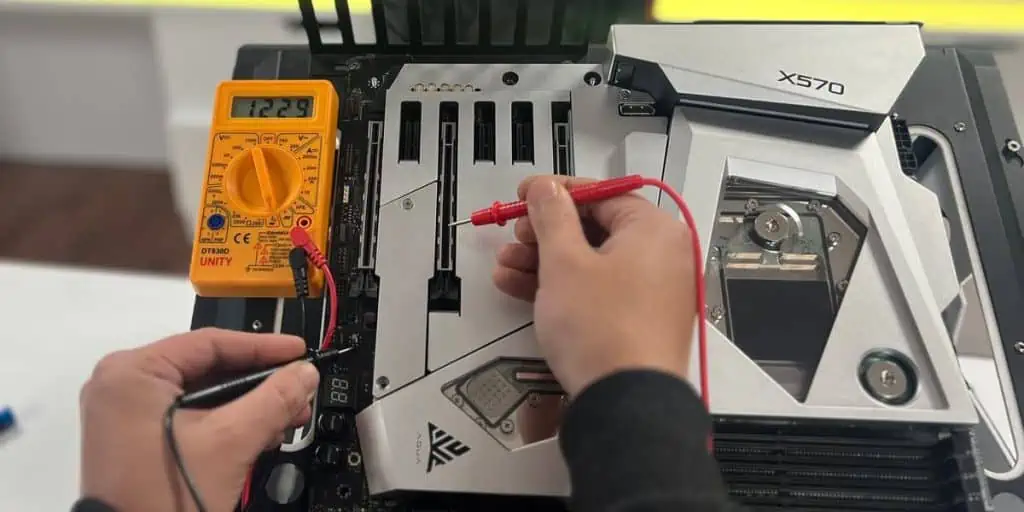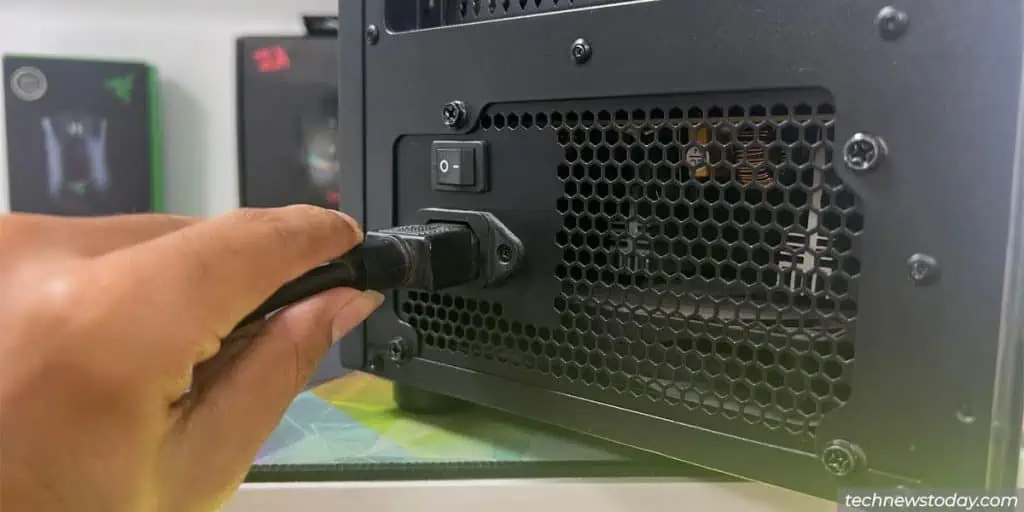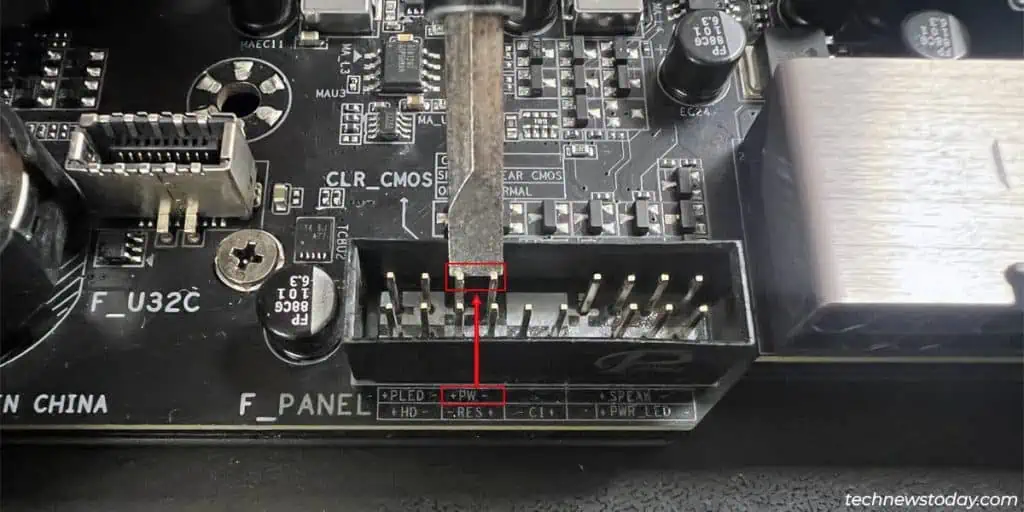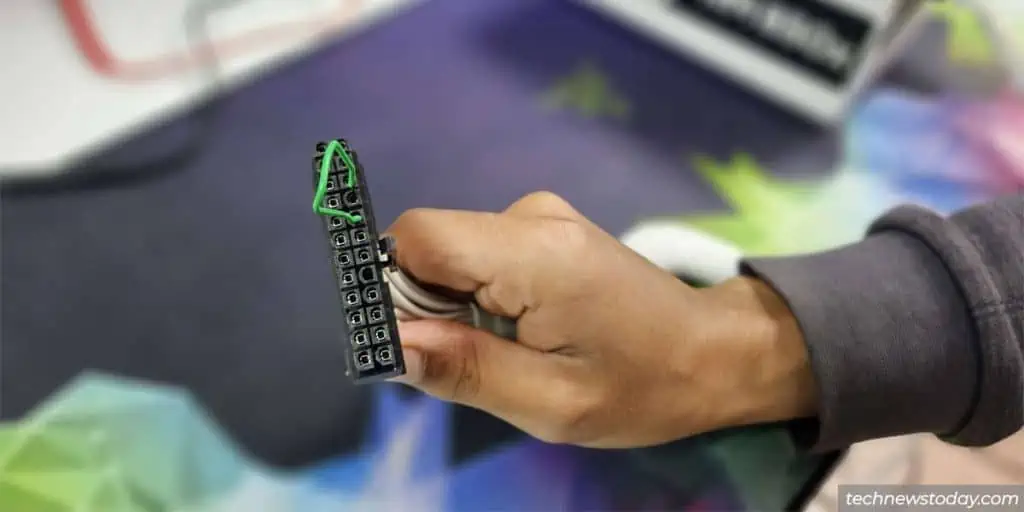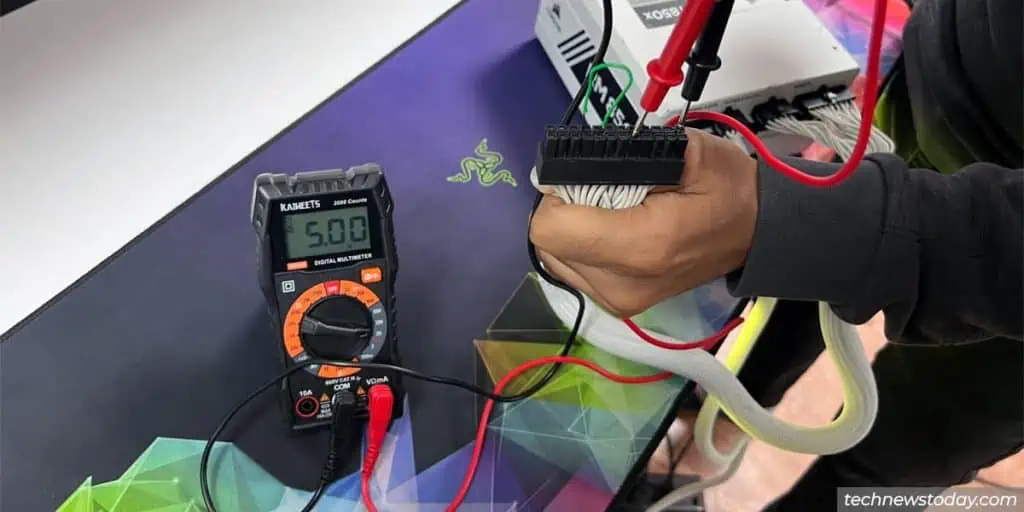If your motherboard is dead, the PC won’t power on at all. This means the PSU fan won’t spin, and the motherboard LEDs won’t light up.
These are the main signs, but don’t conclude that your motherboard is dead based on just these, though. Power supply issues often lead to identical symptoms.
To properly test whether your motherboard is dead, follow the step-by-step troubleshooting process I’ve described in this article.
Diagnosing a Dead Motherboard
A system with a dead motherboard will show little to no signs of power. But problems with the power supply system (outlet, PSU, power cables and connectors, etc.) can also cause the same result.
So, start by verifying that the components are working fine. If you can swap them or test them on another system, that would be the easiest method.
But if that’s not possible, use the following process to test everything on your own:
- Turn off the PSU switch. Unplug the AC power cable and PSU-to-motherboard connections.

- Reconnect everything firmly and turn on the PSU. Then, try turning on the PC.
- Swap the AC power cable with your monitor’s power cord (or any other known good cord).
- Try a different outlet too.
- Short the Power Switch pins (
PW+andPW-) on the motherboard with something like a flathead. This is to account for faulty case power buttons or connections.
If the PC doesn’t turn on, you must check if your PSU is defective.
- Remove the PSU and motherboard from the case and place them on a non-conductive surface.
- Turn on the PC. If the motherboard was shorting due to unintended contact with the case, it should work now.
- Remove all the PSU-to-motherboard connections. Use a PSU jumper or paperclip to start the PSU. We’re testing it independently to check if the PSU was not starting earlier due to Overcurrent protection.

- Finally, use a multimeter to test the voltage readings on the PSU connectors. A PSU tester will also work great. Verify that the PSU is supplying proper voltage.

If the PSU turns out to be faulty, temporarily use another compatible PSU with your PC. If the system boots now, you know which component to replace.
However, if the PSU tested okay in Steps 3 and 4, your motherboard is most likely dead. You may even find visible signs of damage (burnt sections from short circuits, bulged/cracked capacitors, bent pins, etc.).
Ultimately, you’ll have to borrow a board from someone or take the PC to a repair professional. I expect that the system will boot smoothly with a new motherboard, confirming that the old board was indeed dead.
Can You Recover A Dead Motherboard?
Repair professionals often recover dead motherboards by replacing the damaged components. But this tends to be technical and expensive.
In my experience, people are usually better off purchasing a new motherboard instead (due to factors like newer components and warranties).
I’m more interested in recovering motherboards that can’t get past POST (Power-On Self-Test) here.
The BIOS catalogs all necessary devices and prepares the system to boot during POST. If a core component (CPU, RAM, GPU, etc.) is faulty, the system won’t boot. Users often misinterpret this as the motherboard being dead.
In this case, the fans and LEDs will power on. Most importantly, you’ll want to check the diagnostic indicators:
- Beep Codes: If you’ve installed a buzzer on the motherboard, it will play certain sounds at startup. You can look up the patterns on our site (e.g., 1 long 2 short beeps) to understand what problem your system is facing.
- Debug LEDs: If you see a red or orange LED on your motherboard, get closer and check the label. There should be four LEDs on your board to indicate RAM, CPU, display, and boot device issues.
- POST Codes: Higher-end boards also include a small display that shows hexadecimal codes. Once again, you can look up these codes on our site to understand why your PC isn’t booting.
After checking these, you’ll realize that you don’t need to recover your dead motherboard because it’s probably working fine. Instead, you’ll be able to identify the actual faulty component and solve the underlying problem.

